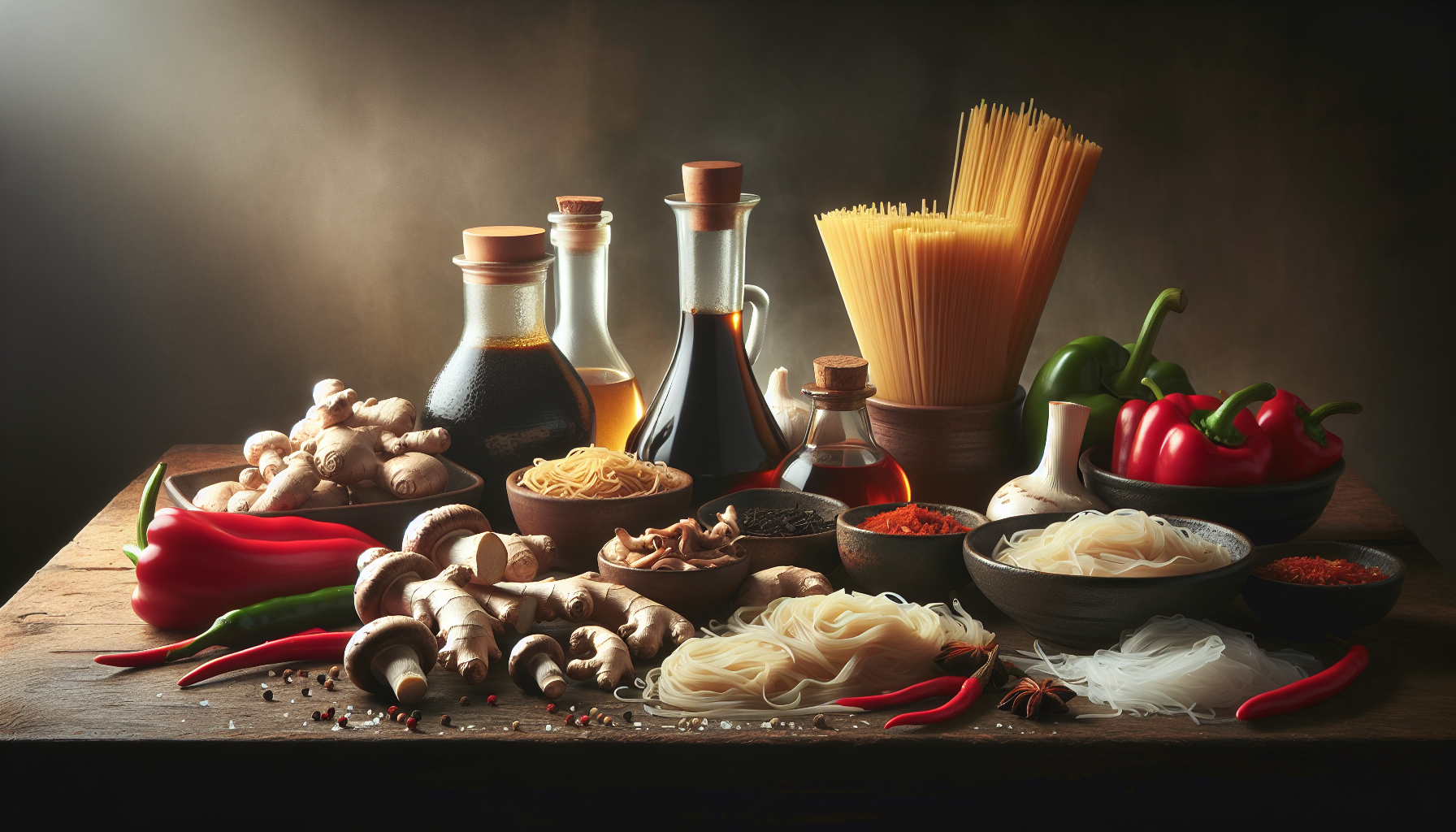Advertisements
Have you ever wondered what the secret is behind oriental cuisine, known worldwide for its delicious and sophisticated recipes? In this article, we will reveal the essential ingredients that transform simple dishes into true gastronomic masterpieces. Get ready to embark on a journey of unique flavors and aromas, capable of delighting the most demanding palate.
Oriental cuisine is renowned for its diversity of ingredients and preparation techniques that result in balanced and flavorful dishes. In this article, we’ll explore the key elements that you can’t do without in your pantry, from exotic spices to fresh vegetables and premium meats. With these ingredients on hand, you’ll be ready to experiment with new recipes and impress your guests with authentic and surprising dishes.
Whether you’re a lover of oriental cuisine or someone looking for a new challenge in the kitchen, this comprehensive guide will help you discover the secrets behind Asian delights. Learn how to combine the right ingredients, use the right utensils, and follow traditional cooking techniques to take your recipes to the next level. Get ready to become a true master in the art of oriental cuisine and be amazed by the incredible results you can achieve.
Advertisements
Essential ingredients of oriental cuisine
1. Soy sauce (shoyu)
Soy sauce, also known as shoyu, is one of the most widely used ingredients in oriental cuisine. It adds a salty, umami flavor to recipes, as well as providing a characteristic dark color. It is widely used in dishes such as yakisoba, chicken and sushi.
2. Ginger
Ginger is a root with a spicy, refreshing flavor that is widely used in Asian cuisine. It can be used fresh, pickled, or powdered to add a special touch to dishes. Ginger is often used in dishes such as miso soup, sweet and sour pork, and salad dressings.
3. Garlic
Garlic is a fundamental ingredient in oriental cuisine, giving dishes an intense and aromatic flavor. It can be used fresh, in paste or dehydrated form, adding depth of flavor to recipes. Garlic is widely used in dishes such as chicken with vegetables, yakimeshi and Japanese curry.
4. Korean chili paste (gochujang)
Korean chili paste, known as gochujang, is a fermented condiment made from chili peppers, glutinous rice, soybeans, and salt. It adds a spicy, sweet, and umami flavor to dishes and is widely used in Korean cuisine in dishes such as bulgogi, bibimbap, and kimchi.
Advertisements
5. Nori seaweed
Nori seaweed is a widely used ingredient in Japanese cuisine, best known for being the wrapping for sushi. It can also be used to add flavor and crunch to dishes such as temaki, onigiri and salads.
- Soy sauce (shoyu)
- Ginger
- Garlic
- Korean chili paste (gochujang)
- Nori seaweed

Oriental cuisine is an invitation to explore a world of flavors, textures and aromas that awaken the senses and provide a unique gastronomic experience. With its deep roots in the history and culture of many countries, Asian cuisine offers a myriad of possibilities that go far beyond the simple act of cooking. By delving into the techniques and ingredients of this cuisine, you will discover a universe of surprising flavors, which can be as simple and delicious as sophisticated and complex.
The first step to exploring the magic of Asian cuisine is to understand the essential ingredients that bring dishes to life. Rice, for example, is one of the pillars of Asian cuisine, used in a variety of ways in countries such as Japan, China, Korea and Thailand. In addition, ingredients such as soy sauce, ginger, garlic, sesame oil, miso, curry and seaweed are essential to bringing authenticity and depth to dishes.
When exploring Japanese cuisine, for example, you might start with sushi, one of its most iconic creations. Learning how to prepare sushi rice, cut fresh fish with precision, and assemble the dish can be a real art. Sashimi, which is simple but requires attention to the freshness and quality of the ingredients, is also a great introduction to this minimalist and refined cuisine.
Chinese cuisine offers a range of vibrant and flavorful dishes. From traditional dim sum, which can be prepared with a variety of fillings, to the famous noodle and stir-fry dishes, Chinese cuisine is characterized by the clever use of ingredient combinations and seasonings that balance sweet, salty, sour and spicy. Hoisin sauce, rice vinegar and light soy sauce are some of the essential seasonings used to create these aromatic and satisfying dishes.
In Thai cuisine, the use of fresh spices and herbs such as lemongrass, chili peppers, coriander and kaffir lime leaves creates spicy and fragrant dishes such as the famous Pad Thai and the Tom Yum. The balance of flavors – sweet, salty, sour and spicy – is what makes Thai food so unique and irresistible. Try making the Thai Green Curry, using coconut milk, curry paste and fresh herbs for a creamy, flavor-packed dish.
Conclusion
In short, the essential ingredients of oriental cuisine are key to transforming your recipes into true gastronomic masterpieces. Soy sauce (shoyu) adds a characteristic salty and umami flavor, while ginger brings a spicy and refreshing touch. Garlic gives an intense and aromatic flavor, and Korean chili paste (gochujang) adds a spicy and sweet flavor to preparations. In addition, nori seaweed is essential for adding flavor and crunch to dishes such as sushi and temaki.
By using these ingredients properly, you can create authentic and delicious dishes inspired by oriental cuisine. From classics like yakisoba and sushi to more elaborate dishes like bulgogi and bibimbap, the combination of these ingredients will bring an explosion of flavors and aromas to your table.
Therefore, by exploring and experimenting with these ingredients, you can elevate your culinary skills and surprise yourself and your guests with true Asian delicacies. Don’t be afraid to venture into the kitchen and try new combinations, as oriental cuisine offers a world of possibilities to transform your recipes into unique and unforgettable gastronomic experiences.




